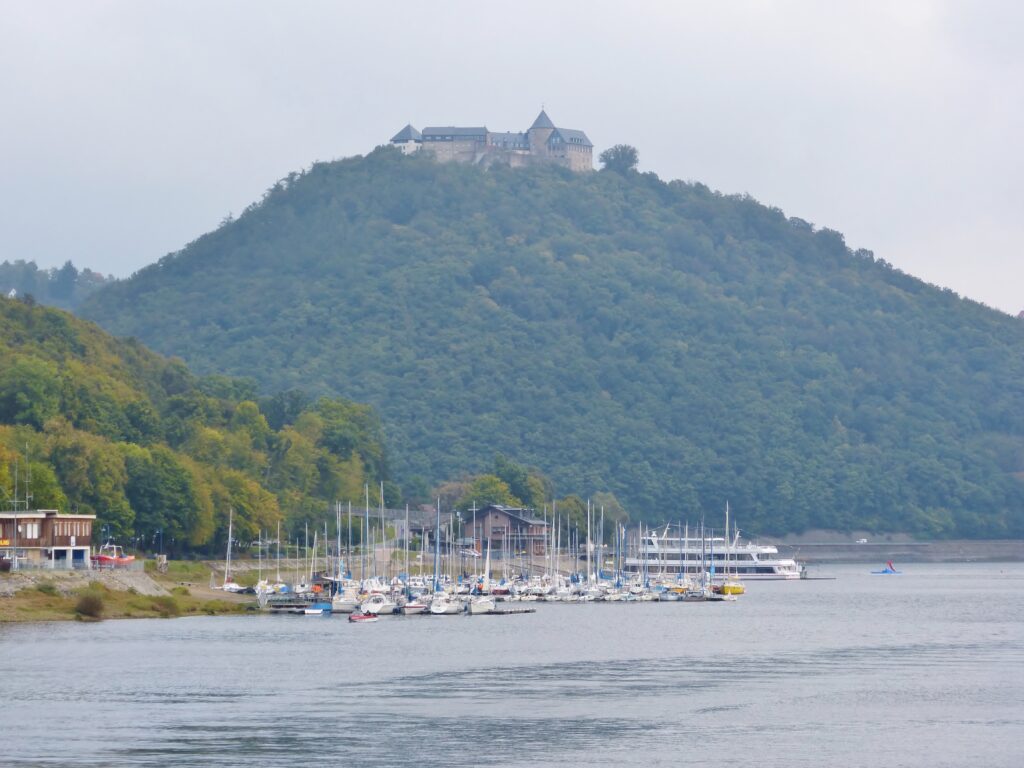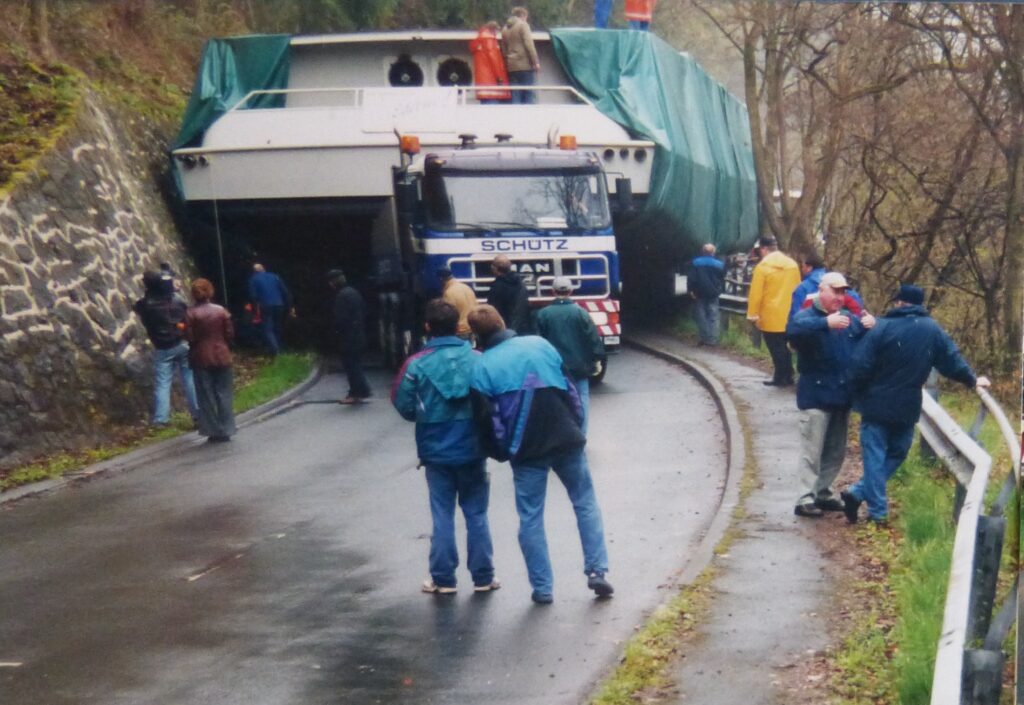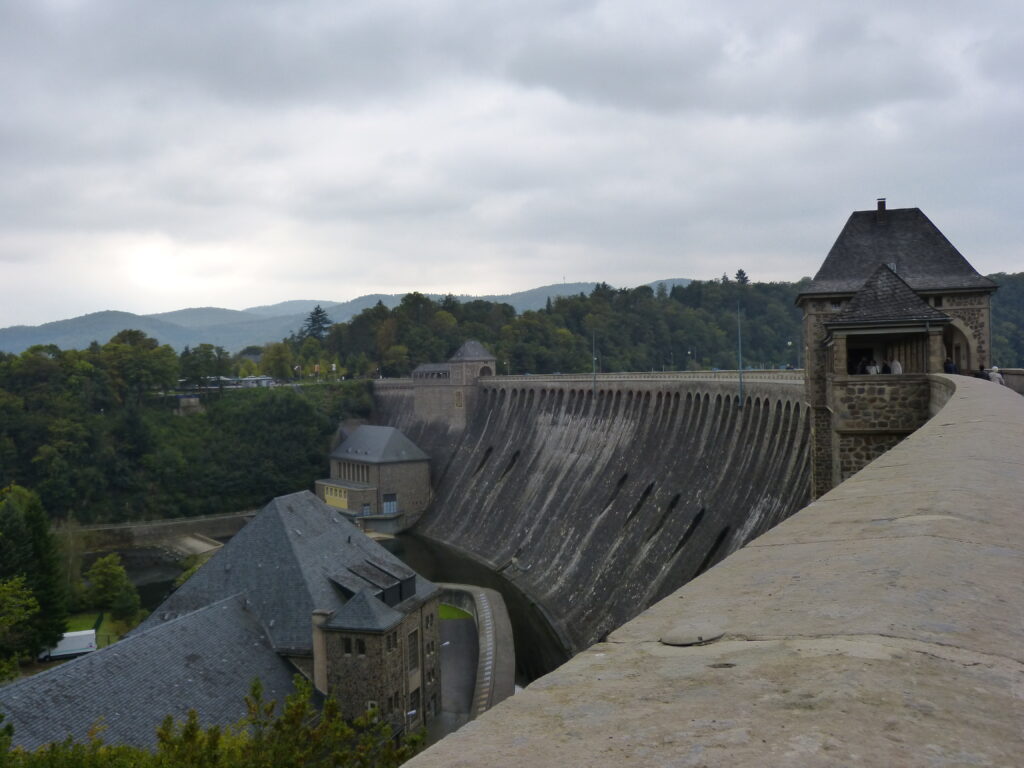Kassel, DE
Kassel, Germany had been on my list of places to visit because there is a UNESCO site there called Berpark Wilhelmshöhe.
Once I started researching the area, though, I realized there was a lot more to it than the UNESCO site.
We started off our weekend in Kassel with a visit to Schloss Waldeck, a castle that’s about 45 minutes away.
I had never even heard of the place before I started looking into the trip, and I soon found out that the most stunning thing about it is not Schloss Waldeck itself, but the view from the castle.

It overlooks the Edersee, a manmade lake/reservoir.
The castle dates back to the 12th century and today it houses a museum, a hotel and a couple of restaurants. You can also get married there, and we did see a wedding party during our visit.
Near the castle is the Waldecker Bergbahn, a little cable car ride that goes from the castle to the Edersee and vice versa.

If you’re ever in the area and looking for this, be aware that it is also known as the Edersee Bergbahn. We saw signs referring to it as the Waldeck-Edersee Seilbahn as well.
The ride has been around since 1961 and when you’re on it, it does feel a little like it hasn’t been updated since then.

We basically just rode it down to the Edersee area and then turned right around and rode back up.
We got back in the car, drove down to the Edersee and then took a one-hour boat ride on the lake.

On board was a photo display showing how they got the boat along the road to the water.

Looks like a little bit of a tight turn, huh? I don’t think I’d want to be driving that truck.
After the boat ride we went over to see the Edersee Sperrmauer or Edersee Dam.

You may have heard of Operation Chastise or of the movie Dam Busters.
Operation Chastise was a British mission carried out during World War II by Royal Air Force Squadron 617. The purpose of the operation, which took place in May 1943, was destroy dams in Germany. Destroying the dams would not only cause flooding but would also cut off hydro-electric power and drinking water supplies among other things.
The Edersee Dam was breached during Operation Chastise and you can see in the photo above where the damage occurred. If you look at all the little arches running across the top of the dam, just under that and left of center you can see a lighter-colored area where the dam was repaired.
Our next stop wasn’t planned, but when we saw this we had stop and check it out.

It’s called Das Tolle Haus Am Edersee and it’s an upside-down house.
There are actually a couple of these in Germany. I had it on my list to see the one in Affoldern, but I’m assuming one upside-down house is much like another and I feel safe in crossing it off the list now.
As you can see, the roof is on the ground and most everything on the outside of the house is upside-down – wheelbarrow, shovel and broom, tree and plant, bench, bicycle and garden hose.
It’s a little disorienting to go inside because the furniture in the rooms is on the ceiling.
Even the bathroom has the toilet, sink and medicine cabinet on the ceiling.

I’m not quite sure why there’s a bottle of Coke on the bathroom sink though. If you have any ideas, let me know.
Once we were done experiencing the upside-down house we drove over to the Bergpark Wilhelmshöhe. It’s been a UNESCO site for a little over a year, since June 2013.
One of the main attractions in the park is the waterworks, a cascade of water that begins on the front side of this monument.

That’s a giant statue of Hercules on top of the monument and yes, he’s anatomically correct.
Unfortunately we didn’t get to see the water spectacle due to timing. As you can see, the monument was under construction and it appeared the waterworks shows may have been limited because of that. In any case, it sounds like something that would be worth going back to see.
It takes six people to open the gates that release the water, which then flows down the hill.

The water then meanders over 12 kilometers, forming waterfalls and ponds along the way.
It takes one hour for the water to reach a fountain that is near the palace that you can just make out past the trees in the photo above.
The monument and waterworks were completed in the year 1717, and the waterworks have been operating the same way (manually opening the gates to release the water) ever since.
Apparently the waterworks draws quite a crowd and people run downhill to follow along the water’s path once the gates are opened.
The next morning we drove back to the Bergpark to go to the art museum in the palace, which is called Schloss Wilhelmshohe.
The museum has numerous works by the “old masters”, which are among my favorite type of paintings.
There were beautiful paintings by Dutch, Flemish and German artists Peter Paul Rubens, Jan Brueghel (both the Elder and the Younger), Lucas Cranach (again, both the Elder and the Younger) and Albrecht Dürer, among others.
The realism in paintings by those artists never fails to amaze me.
There was also an exhibition of paintings by Gerhard Glück, a German artist who is still living. His paintings are very whimsical and amusing.
At this museum I discovered that I like another type of painting called grisaille.

I don’t know if you can really even tell from that photo (photos were allowed in the museum for a fee), but paintings done in this style look like 3D sculptures. The painting is done using mainly shades of gray (hey, that sounds like it could be a good book title!) and it’s really mind-blowing.
Aside from the fact that we didn’t get to see the waterworks at the Bergpark, it was a nice weekend getaway.
Kassel is only about a 2-hour drive from us, so if we want to go back to see the waterworks it will be easy enough and a good excuse for another visit!


